5 TIPS TO RELIEVE MUSCLE SORENESS POST WORKOUT (DOMS)
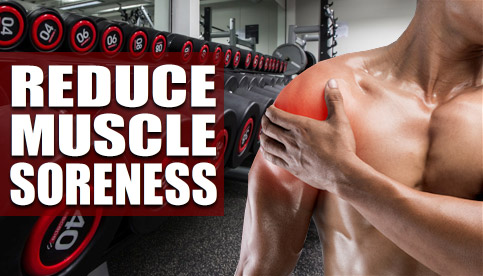
Although some people enjoy the feeling of post workout muscle soreness as a reminder of the hard work they put in at the gym, for others it can become a genuine nuisance that compromises performance on subsequent workouts and interferes with regular day to day life.
Delayed onset muscle soreness (“DOMS” for short) is something that isn’t yet fully understood, and no one knows for sure exactly what causes it or how it is best treated.
Most research suggests that it’s a result of pain receptors being sensitized by the inflammatory response to muscle tissue damage, however, that’s not important for the purposes of this article.
Today I want to focus on the solutions rather than the possible causes and will be outlining 5 simple tips you can employ to relieve muscle soreness in the days following your workout.
Since DOMS is still an area surrounded by a lot of confusion (there are currently 6 different theories as to what might actually cause it), just think of these tips as being some ideas you can experiment with to see what works for you.
They’re all very easy to implement and will provide almost immediate feedback, so you can quickly test each of them out without having to invest much time or effort in the process.
Also keep in mind that these muscle soreness tips assume you’re already taking care of the basics, meaning:
- You’re eating a well balanced micronutrient rich diet throughout the week.
- You’re consuming sufficient protein each day at around 0.8-1g per pound of body weight.
- You’re getting adequate sleep each night.
- You’re consuming plenty of water each day to stay properly hydrated.
- You’re moderating your overall training workload and aren’t going overboard on total volume and frequency.
These steps should go without saying, so if you find yourself very sore after workouts but aren’t following one or more of them, that’s where you’ll want to put your attention first and foremost.
So, with that out of the way, here are 5 tips to reduce muscle soreness that you can try out…
Tip #1: The “Repeated Bout Effect”
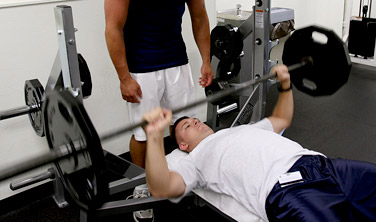
Although this technically isn’t a direct actionable tip, it’s still worth mentioning here since it’s usually the single most important factor when it comes to reducing muscle soreness over time.
That is, the less total training experience you have, the worse your delayed onset muscle soreness will tend to be since intense weight training is still a new stimulus for your body.
As you continue training and your body begins to adapt and become more accustomed to it, the less sore you’ll start to feel after your workouts. This is called the “repeated bout effect”.
It’s not uncommon for complete beginners to be extremely sore following their workouts, whereas more advanced trainees may hardly get sore if at all.
So, if you’ve been only been training for a few weeks or months, just keep in mind that your post workout muscle soreness will gradually decrease as you stick to your routine over time.
This also applies to more experienced trainees who have recently switched over to a different program, since employing new workout parameters (such as differing rep ranges, volume or exercises) can also cause an initial increase in muscle soreness that gradually dissipates from week to week.
Tip #2: Active Recovery
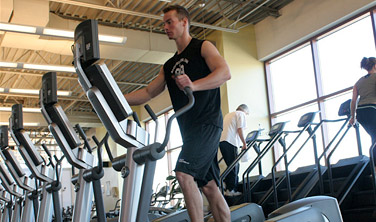
Active recovery is a well documented method to reduce muscle soreness and involves performing some light, low intensity movement for whichever muscle groups you trained the previous day.
For example, you could do some light cycling or stair stepping for your legs, or some rowing or swimming for your upper body.
Another option is to just use actual barbells/dumbbells/machines using very low weight and higher reps.
The idea behind active recovery is to improve blood flow, increase nutrient delivery, remove waste products from the muscle and improve muscle function following intense workouts.
Just make sure that with active recovery you’re sticking to a light, easy pace and not fatiguing yourself in any way.
As far as actual time frames go, 10-15 minutes will do the trick.
Tip #3: Post-Workout Foam Rolling
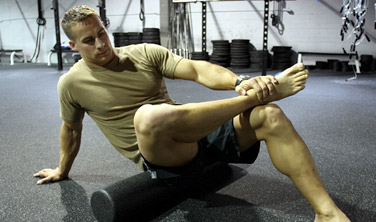
Not only can foam rolling work well as a tool for improving overall mobility and flexibility when done before workouts and on off days, but it may help to relieve muscle soreness after your workouts as well.
After your workout is complete, grab a foam roller and spend about 10-15 minutes working on the areas that were trained. Apply moderate pressure to the muscle using the roller and your body weight, and make sure to go slow at no more than 1 inch per second.
When you find an area that is particularly tight or sensitive, pause on it for several seconds and try to relax as much as possible until the tenderness eases.
A medicine ball or smaller tools like a tennis ball or lacrosse ball can also be used for certain areas as well if you want to increase the pressure further.
The theory here is that the compression of the muscle tissue helps to ease tightness and tension between the muscles and fascia, helping to stimulate blood flow, reduce inflammation and decrease lactic acid buildup.
It can be quite painful (especially if you’re not very experienced with it) but can often make quite a difference when used correctly.
Tip #4: Hot/Cold Showers
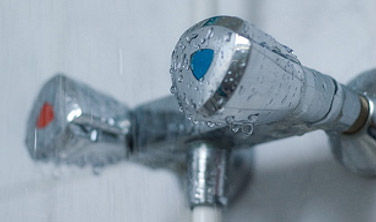
Also known as “contrast showers”, this is a method to reduce muscle soreness that many trainees swear by and that is often used by athletes to improve recovery between workout sessions or post-competition.
To do this, just hop in the shower after your workout and alternate between periods of hot and cold temperatures.
Don’t crank it up so high that it actually hurts your skin, but just choose a fairly hot temperature that is still comfortable for you to stand in. After that, go the opposite direction and adjust it to a cold temperature.
There’s no one exact method in terms of time frames here, but 1-3 minutes of hot followed by 1-3 minutes of cold for a total of 3-4 cycles should work well.
Exactly how contrast showers work isn’t quite understood, but the idea is that it lowers the amount of lactate in the blood and decreases inflammation.
Tip #5: Citrulline Malate Supplementation
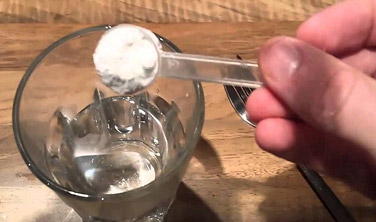
Citrulline malate is most often used as a pre-workout supplement for increasing training performance in moderate to higher rep ranges, but another research backed benefit of this compound is that it may relieve muscle soreness as well.
One popular study involving 41 men performing the flat barbell bench press showed a significant 40% decrease in muscle soreness in those supplementing with the citrulline malate.
6-8 grams taken 30-45 minutes before your workout is something you can experiment with, and you’ll also get the potential added benefit of a small increase in training performance as well.
So, to recap, these are the main things I’d suggest trying out in order to reduce muscle soreness after workouts:
- 10-15 minutes of low intensity “active recovery” on the day following your workout.
- 10-15 minutes of foam rolling on the muscles trained within two hours of completing your workout.
- A hot/cold shower post-workout consisting of 1-3 minutes of hot temperature followed by 1-3 minutes of cold temperature for a total of 3-4 cycles.
- 6-8 grams of a citrulline malate supplement taken 30-45 minutes prior to your workout.
Aside from these 4 steps, also keep in mind that if you’re still a beginner in the gym or have recently switched to a new program, the most effective thing you can do to relieve muscle soreness is to simply continue training and understand that it will gradually decrease from week to week as your body adapts.
Although these tips most likely aren’t going to eliminate muscle soreness altogether, they should help to reduce it by a decent margin nonetheless.
If you found this article helpful, make sure to sign up for your FREE custom fitness plan below...




